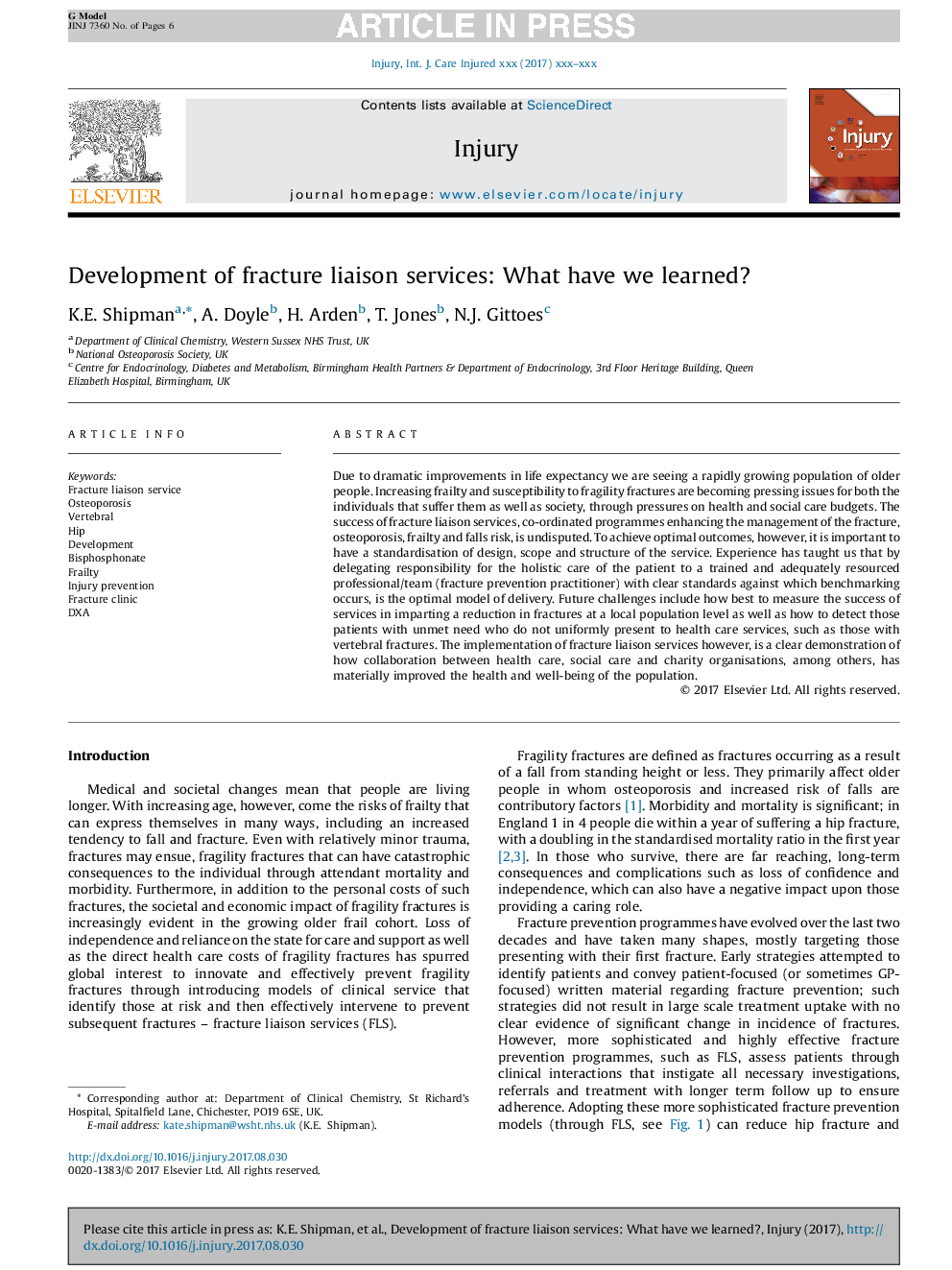| کد مقاله | کد نشریه | سال انتشار | مقاله انگلیسی | نسخه تمام متن |
|---|---|---|---|---|
| 8719053 | 1588890 | 2017 | 6 صفحه PDF | دانلود رایگان |
عنوان انگلیسی مقاله ISI
Development of fracture liaison services: What have we learned?
ترجمه فارسی عنوان
توسعه خدمات ارتباطی شکستگی: چه چیزی یاد گرفته ایم؟
دانلود مقاله + سفارش ترجمه
دانلود مقاله ISI انگلیسی
رایگان برای ایرانیان
کلمات کلیدی
ترجمه چکیده
با توجه به پیشرفت چشمگیر در امید به زندگی، ما شاهد رشد سریع جمعیت مردم سالمند هستیم. افزایش ضعف و حساسیت به شکستگی شکنندگی در حال تبدیل شدن به مسائل روزمره برای هر دو افراد که به آنها و همچنین جامعه رنج می برند، از طریق فشار بر سلامت و بودجه مراقبت های اجتماعی. موفقیت خدمات ارتباطی شکست، برنامه های هماهنگ شده که باعث بهبود مدیریت شکستگی، پوکی استخوان، ضعف و ریسک می شود، بی تردید است. با این وجود برای رسیدن به نتایج مطلوب، استاندارد سازی طراحی، دامنه و ساختار سرویس مهم است. تجربه ما به ما آموخته است که با اعطای مسئولیت مراقبت جامع از بیمار به یک حرفه / تیم آموزش دیده و به اندازه کافی (طرفدار پیشگیری از شکست) با استانداردهای واضح که بر اساس آن معیار ارزیابی انجام می شود، مدل مطلوب تحویل است. چالش های آینده شامل بهترین شیوه برای اندازه گیری موفقیت خدمات در به دست آوردن کاهش شکستگی در سطح جمعیت محلی و همچنین نحوه شناسایی بیماران با نیاز ناخوشایند است که به طور یکسان به خدمات بهداشتی، مانند کسانی که با شکستگی مهره ای، ارائه نمی کنند. با این حال، اجرای خدمات ارتباطی شکستگی، نشان دهنده واضح بودن چگونگی همکاری بین مراقبت های بهداشتی، مراقبت های اجتماعی و سازمان های خیریه، از جمله، سلامت و رفاه مردم است.
موضوعات مرتبط
علوم پزشکی و سلامت
پزشکی و دندانپزشکی
طب اورژانس
چکیده انگلیسی
Due to dramatic improvements in life expectancy we are seeing a rapidly growing population of older people. Increasing frailty and susceptibility to fragility fractures are becoming pressing issues for both the individuals that suffer them as well as society, through pressures on health and social care budgets. The success of fracture liaison services, co-ordinated programmes enhancing the management of the fracture, osteoporosis, frailty and falls risk, is undisputed. To achieve optimal outcomes, however, it is important to have a standardisation of design, scope and structure of the service. Experience has taught us that by delegating responsibility for the holistic care of the patient to a trained and adequately resourced professional/team (fracture prevention practitioner) with clear standards against which benchmarking occurs, is the optimal model of delivery. Future challenges include how best to measure the success of services in imparting a reduction in fractures at a local population level as well as how to detect those patients with unmet need who do not uniformly present to health care services, such as those with vertebral fractures. The implementation of fracture liaison services however, is a clear demonstration of how collaboration between health care, social care and charity organisations, among others, has materially improved the health and well-being of the population.
ناشر
Database: Elsevier - ScienceDirect (ساینس دایرکت)
Journal: Injury - Volume 48, Supplement 7, December 2017, Pages S4-S9
Journal: Injury - Volume 48, Supplement 7, December 2017, Pages S4-S9
نویسندگان
Kate E. Shipman, Alison Doyle, Hilary Arden, Tim Jones, Neil J. Gittoes,
